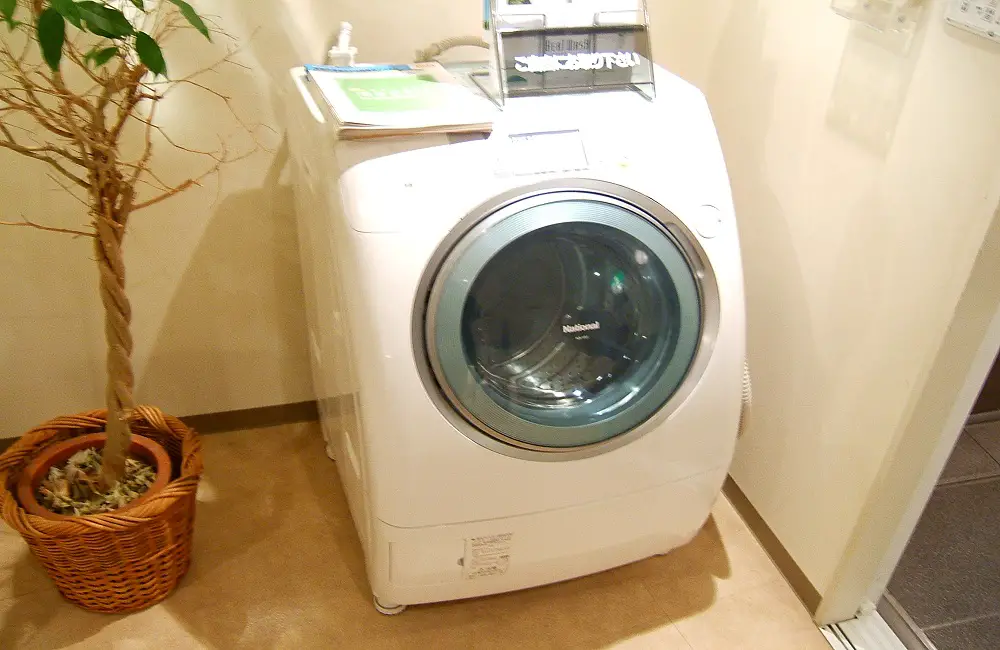Have you ever been in a rush to wash your clothes, only to find out that your washing machine is spinning much slower than it should be? It can be a frustrating situation to deal with. Not only does it take longer for your clothes to dry, but it can also leave them feeling wetter than they typically would after a spin cycle.
Today, we’ll explore the reasons why your washing machine may be spinning slowly and what you can do to troubleshoot the issue.
Why Does My Washing Machine Spin Slowly?

Washing machines clean your laundry by turning the drum inside. Sometimes it turns to agitate the clothes and remove dirt, while other times, it spins fast to remove all moisture. When you find that your washing machine doesn’t spin fast, that’s a clear sign that there’s a problem.
A washing machine that doesn’t spin fast is likely experiencing a problematic drain system or objects stuck between its inner and outer tubs. When the drain system fails, excess water in the drum will prevent it from spinning fast. Likewise, stuck clothes and objects between the tubs will cause the same problem. A worn-out drive belt or a damaged coupler will also make your washer spin slowly.
In addition, a washer that spins slowly may also indicate issues with the motor or the control board. If the motor is not functioning properly, it may not be able to generate enough power to spin the drum at the desired speed. Similarly, a malfunctioning control board can affect the operation of the motor and lead to a slower spin cycle.
A washer that spins slowly can’t give you the clean clothes that you expect it to. So, it is important to troubleshoot the issue to identify the underlying cause and take appropriate action. By addressing the specific problem, you can ensure that your washing machine functions optimally and delivers the desired results.
How Do You Fix A Slow Spinning Washing Machine?

Not only must all washing machines be able to spin, but they must also be able to do so at high speeds. When the spin cycle fails to happen fast enough, your clothes will come out soaking wet once the wash program is over.
This can be a hassle because wet clothes take longer to dry and may increase the risk of developing a musty odor. Therefore, it is important to address the issue promptly to ensure efficient and effective laundry results.
Problematic Drain System
What this part does: At the start of your chosen wash program, the washing machine will fill with water. Later, the washer will need to remove all that water so it can continue cleaning your clothes. That’s where the drain system comes in.
The drain system consists of the drain pump, the drain filter (or ‘coin trap’) and the drain hose. Together, the system drives used and dirty water out of the washing machine so the appliance can refill it with clean water instead.
What’s likely happening: When your washing machine spins slowly, it’s likely because there’s a problem in the drain system. You see, the spin cycle and drain system work closely together. The drain system drives the water out towards your household drain as the drum spins to remove moisture from your laundry.
A failing drain system will cause water to back up into the drum. As a result, that excess water will prevent the drum from spinning fast, no matter how hard your washer tries to turn it.
The solution here is to troubleshoot and clear your washer’s drain system. Firstly, check for clogs in the drain filter and drain hose. Lint and other particles often clog these parts, preventing water from flowing out of your washer.
Once you’re sure everything is clear, check that the drain pump is functioning correctly without any foreign objects jammed inside. If the pump isn’t working, you’ll have to replace it with a new one.
Additional information: Maintaining a well-functioning drain system is crucial for optimal washing machine performance. Regularly cleaning and inspecting the drain filter, drain hose, and drain pump can help prevent issues such as slow spinning or water backup.
It’s also useful to follow the manufacturer’s guidelines and avoid overloading the machine, as these factors can impact the drain system’s efficiency and overall washer function.
Objects Stuck Between Tubs

Your washing machine consists of two tubs: an inner tub and an outer tub. The inner tub holds your laundry, and it’s the part that turns and spins when necessary.
The inner tub is perforated (meaning it has lots of holes) that allow water to flow freely between the inner and outer tubs. This design ensures that your clothes get thoroughly washed and rinsed.
However, the outer tub doesn’t move. It’s there to contain all the water inside your washing machine and provide stability to the inner tub during operation.
Another likely reason for your slowly spinning washing machine is that there is something stuck between the inner and outer tubs. It’s pretty common for clothing items to find their way from the inner tub to the outer one. Plus, there’s always a chance that foreign objects in clothes pockets could also fall through the same way.
When clothes or objects get stuck between the inner and outer tubs, they will generate friction, preventing the inner tub from spinning smoothly. As a result, your washing machine’s performance may be affected, and the clothes inside may not get cleaned properly.
So, despite how hard the washer motor might work, those clothes or items will significantly slow the inner tub down. This can cause your laundry cycles to take longer and may even lead to unclean clothes.
To address this problem, you can resolve it by removing the items stuck between the inner and outer tub. In some cases, you might be able to pull it out from between the gaps. That’s more likely if the stuck item is a piece of clothing, especially something with long sleeves.
If that doesn’t work, you’ll likely have to dismantle the washer and separate the two tubs. This requires more advanced troubleshooting and should only be attempted if you are comfortable with appliance repairs. By doing so, you can ensure that you remove all objects stuck between both tubs and restore the proper functioning of your washing machine.
Worn-Out Drive Belt

Many washing machines on the market today still use belt-driven mechanisms. The rubber belt wraps tightly around the motor and tub, transferring energy between the two.
So, the washing machine motor will turn the belt, which then causes the tub to spin at high speeds.
Since washing machine drive belts are made from materials like rubber, they’ll gradually wear out over an extended period. As that happens, the belt will become loose and can’t keep a tight grip on the motor or the tub that it turns.
So, the belt might slip and fail to spin the tub fast enough even though the motor is turning. Consequently, this leads to a spin cycle that’s far too slow, resulting in clothes not being properly cleaned.
It’s typical for washing machine belts to wear out and become loose due to regular usage. If you notice your spin cycle has slowed down, it could be an indication that the belt needs to be replaced.
Replacing a drive belt is a relatively straightforward process, although it does require you to remove the washer’s rear panel. This will give you access to the existing belt, which you’ll then remove.
Once the old belt is removed, you can easily wrap the new belt around the motor and the tub in the same way as before. By doing so, the spin cycle should return to its average speed, ensuring your clothes are thoroughly cleaned.
Damaged Coupler
While some washing machines use a belt-driven mechanism, others use a ‘direct drive’ system instead. In these washers, there are no belts required to spin the drum. Instead, a direct drive washer has a motor that connects directly to the drum.
The middle point where the motor meets the drum is a component known as the coupler. The motor generates a lot of energy to spin your drum, and all of that passes through the coupler. So, the coupler is under a lot of stress and experiences wear every time you use it.
Over time, the coupler may start to wear out and break apart. This can prevent the coupler from maintaining a solid grip on the tub, causing the motor to be unable to spin the drum as fast as it should.
Thankfully, replacing the coupler is a straightforward solution. First, you’ll need to remove the damaged coupler, including any broken pieces that might have fallen inside the washer. Then, you can install a new coupler to complete the direct drive mechanism.
Once you have a new coupler in place, the connection between the motor and the drum will be restored, allowing the drum to spin at its optimal speed. So, with a little maintenance, your washer will be back to working perfectly again.
Should A Washing Machine Spin Really Fast?

The speed of a washing machine’s spin cycle determines how dry or wet your clothes emerge from the machine. Faster spinning rates yield drier clothes that dry quicker when hung out to dry, or in the dryer.
However, faster spinning can also be rougher on clothes. Your clothes may experience more wear and tear, particularly if they are made of delicate material, such as silk or lace. Over time, the fibers in your clothes break down, and the stitches come undone faster due to the increased rubbing.
Experts suggest that the average speed for a washing machine spin cycle should be between 1000 to 1400 revolutions per minute, which can very adequately clean and spin-dry your garments without causing too much damage.
When choosing a washing machine, you must also consider the type of motor it has. Some motors are designed to be gentler than others in their operation and yet spin faster. A Direct Drive motor, for instance, is a popular option among top washing machine makers.
The Direct Drive motor avoids the friction associated with belts and pulleys, resulting in a significant reduction in noise and vibration levels. As a result, Direct Drive washing machines can spin faster at their top speed without causing damage to your clothes, and at the same time, the machine offers significant energy savings in your electricity bills.
Another crucial factor to consider when determining how fast your washing machine should spin is the size and weight of the load it can handle. The bigger the drum, the more the washing machine will likely weigh.
Before a spin cycle begins, the machine must reach the required spin speed. The bigger the drum, the more energy is required to get the clothes and the drum going. If you overload your washing machine with too many items, it will struggle to spin them adequately, regardless of how fast it can spin.
This scenario can result in the agitator getting stuck, or even water leaking out of the washer. Always ensure that your machine’s owner’s manual is handy for reference, and follow the recommended load limit.
If you want a washing machine that will help extend the life of your clothes while also offering great cleaning and spinning results, you must invest in high-quality materials. Indeed, investing in a good washing machine can save you a lot of money over time.
Imagine not having to replace your clothes every few months due to excessive wear and tear. Avoid the temptation of buying the cheapest option, as it may result in long-term costs and heartache. Remember, the higher the quality of your washing machine, the more energy-efficient, quieter, and faster it will spin, leading to shorter wash times and drier clothes once the cycle finishes.
Final Words
To conclude, there are many reasons why your washing machine may be spinning slowly. An unbalanced load, blockages in the drain pipe, worn out belts, and motor issues can all lead to this problem.
Try to troubleshoot the issue if you can. However, if the problem persists, you may need to consider buying a new machine. Always remember to refer to your machine’s manual before attempting repairs or opening up the internal components.

